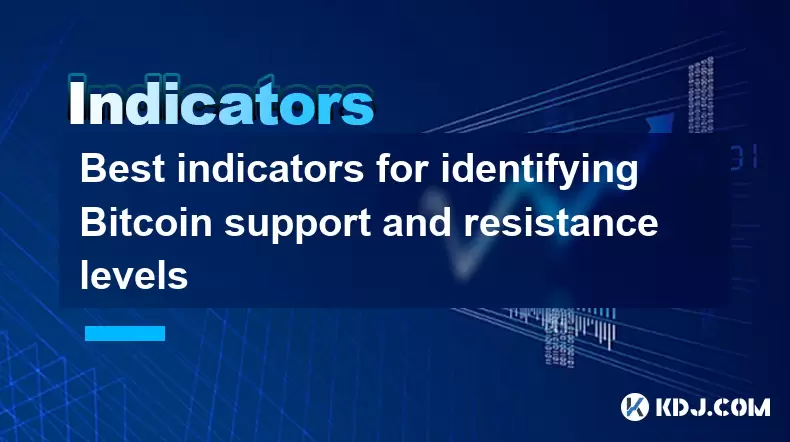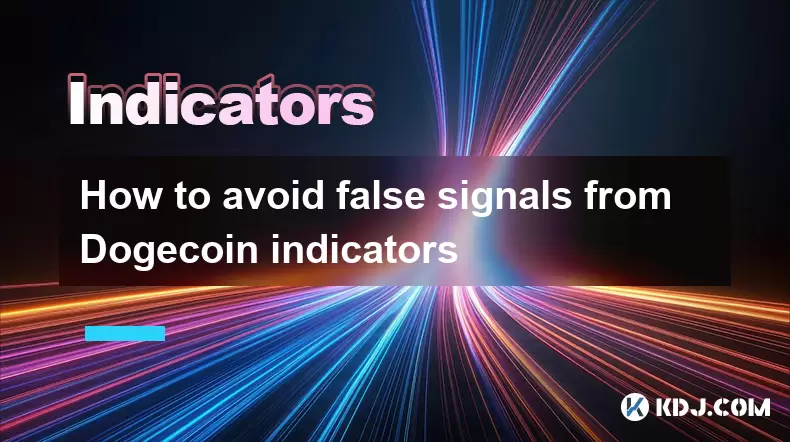-
 Bitcoin
Bitcoin $108,250.0992
0.11% -
 Ethereum
Ethereum $2,515.9404
0.03% -
 Tether USDt
Tether USDt $1.0003
0.00% -
 XRP
XRP $2.2166
-0.19% -
 BNB
BNB $656.5904
0.29% -
 Solana
Solana $147.4122
-0.58% -
 USDC
USDC $1.0000
-0.01% -
 TRON
TRON $0.2830
0.06% -
 Dogecoin
Dogecoin $0.1641
0.27% -
 Cardano
Cardano $0.5739
-0.19% -
 Hyperliquid
Hyperliquid $39.1463
-0.11% -
 Sui
Sui $2.8882
-0.02% -
 Bitcoin Cash
Bitcoin Cash $487.6428
0.31% -
 Chainlink
Chainlink $13.2097
0.07% -
 UNUS SED LEO
UNUS SED LEO $9.0308
0.10% -
 Avalanche
Avalanche $17.8608
0.13% -
 Stellar
Stellar $0.2379
-0.06% -
 Toncoin
Toncoin $2.7400
-0.39% -
 Shiba Inu
Shiba Inu $0.0...01144
-0.36% -
 Litecoin
Litecoin $87.5467
0.66% -
 Hedera
Hedera $0.1538
0.22% -
 Monero
Monero $315.5479
0.36% -
 Dai
Dai $1.0000
0.00% -
 Polkadot
Polkadot $3.3523
-0.71% -
 Ethena USDe
Ethena USDe $1.0003
0.01% -
 Bitget Token
Bitget Token $4.3960
-1.03% -
 Uniswap
Uniswap $7.2663
4.19% -
 Aave
Aave $272.8619
2.04% -
 Pepe
Pepe $0.0...09676
-0.18% -
 Pi
Pi $0.4586
-2.87%
Best indicators for identifying Bitcoin support and resistance levels
Bitcoin traders use support and resistance levels, moving averages, and Fibonacci retracements to identify key price zones for strategic entries and exits.
Jul 06, 2025 at 07:36 am

Understanding Bitcoin Support and Resistance
In the world of cryptocurrency trading, Bitcoin support and resistance levels are crucial for making informed decisions. These levels represent key price points where the asset is likely to find buying interest (support) or face selling pressure (resistance). Identifying these zones accurately can help traders determine entry and exit points.
Support refers to a price level where demand is strong enough to prevent further decline. Conversely, resistance indicates a level where supply outweighs demand, causing the price to stall or reverse downward. Recognizing these levels in Bitcoin's volatile market requires more than just observation; it demands the use of technical indicators that provide reliable signals.
Using Moving Averages to Identify Key Levels
One of the most effective tools for identifying support and resistance is the moving average (MA). Traders often rely on the 50-day, 100-day, and 200-day moving averages as dynamic support and resistance levels.
- The 50-day MA acts as a short-term guide and often serves as a temporary support during pullbacks.
- The 200-day MA, also known as the "death cross" trigger when crossed below by shorter MAs, provides long-term support and resistance insights.
- When Bitcoin's price approaches these levels and bounces off them, it reinforces their significance.
For example, if Bitcoin has been consolidating above the 50-day MA and then breaks above the 200-day MA, this could signal a shift from a bearish to a bullish trend.
Leveraging Fibonacci Retracement Tools
The Fibonacci retracement tool is another powerful indicator used to identify potential support and resistance areas. It works by measuring the size of a recent price move and projecting retracement levels based on key Fibonacci ratios—23.6%, 38.2%, 50%, 61.8%, and 78.6%.
To apply this to Bitcoin:
- Draw the tool from a significant swing low to a swing high during an uptrend.
- In a downtrend, draw it from a swing high to a swing low.
- Watch how Bitcoin reacts around these levels—if it finds support at the 38.2% retracement, it may continue its original upward trend.
These levels act as psychological zones where traders place orders, reinforcing their importance in real-time decision-making.
Utilizing Pivot Points for Daily Trading
Pivot points are especially useful for intraday Bitcoin traders who want to identify potential turning points in the market. They are calculated using the previous day’s high, low, and closing prices, and they generate multiple support and resistance levels.
- The pivot point itself serves as a central reference.
- S1, S2, S3 indicate descending support levels.
- R1, R2, R3 represent ascending resistance levels.
Traders often watch whether Bitcoin opens above or below the pivot point. If it opens above, the bias becomes bullish, with R1 and R2 acting as targets. If it trades below, the market sentiment turns bearish, with S1 and S2 as downside targets.
This method is particularly effective when combined with volume analysis and candlestick patterns to confirm breakouts or reversals.
Combining Volume Profile with Price Action
Volume profile helps traders visualize the amount of trading activity at specific price levels, which can highlight critical support and resistance zones. Areas with high volume indicate where traders have historically placed orders, suggesting stronger support or resistance.
- Use the volume-by-price chart to spot “value areas” where Bitcoin has spent the most time trading.
- Pay attention to price rejection at high-volume nodes—this can signal a reversal or continuation depending on context.
- Combine this with order block analysis for deeper insight into institutional activity.
By observing where large volumes cluster, traders can anticipate potential price reactions before they happen, giving them a strategic edge in Bitcoin trading.
Frequently Asked Questions
Q: Can support turn into resistance and vice versa?
Yes, in Bitcoin trading, support levels can become resistance once broken, and resistance can turn into support after a breakout. This phenomenon occurs because traders adjust their strategies based on past price behavior, creating self-fulfilling prophecies.
Q: How accurate are Fibonacci levels in predicting Bitcoin’s movement?
While not foolproof, Fibonacci retracements offer statistically significant probabilities when used with other indicators like volume and candlestick patterns. Their accuracy improves when applied to longer timeframes such as daily or weekly charts.
Q: Is it better to trade support/resistance on higher or lower timeframes?
Higher timeframes like the daily or weekly charts tend to offer more reliable support and resistance levels due to increased market participation and reduced noise. Shorter timeframes can be used for precise entries but should align with the broader trend.
Q: Should I always wait for confirmation before acting on a support/resistance level?
It is generally safer to wait for confirmation through candlestick patterns, volume spikes, or momentum indicators before entering a trade. Acting prematurely on unconfirmed levels increases risk, especially in Bitcoin’s highly volatile environment.
Disclaimer:info@kdj.com
The information provided is not trading advice. kdj.com does not assume any responsibility for any investments made based on the information provided in this article. Cryptocurrencies are highly volatile and it is highly recommended that you invest with caution after thorough research!
If you believe that the content used on this website infringes your copyright, please contact us immediately (info@kdj.com) and we will delete it promptly.
- Litecoin Breakout Watch: What Traders Need to Know Now
- 2025-07-06 16:50:13
- Bitcoin, Solana, Ethereum: Decoding the Latest Buzz on the Blockchain
- 2025-07-06 16:50:13
- Widnes Resident's 50p Could Be Your Ticket to Easy Street: Rare Coin Mania!
- 2025-07-06 16:55:13
- Bitcoin, Solaris Presale, and Token Rewards: What's the Buzz?
- 2025-07-06 16:55:13
- Grass Seeds, Garden Experts, and a £1 Coin Hack: Your Guide to a Perfect Lawn
- 2025-07-06 14:30:13
- Cracking the Code to a Perfect Lawn: Grass Seeds, Expert Tips, and the £1 Coin Hack!
- 2025-07-06 14:50:13
Related knowledge

How to spot manipulation on the Dogecoin chart
Jul 06,2025 at 12:35pm
Understanding the Basics of Chart ManipulationChart manipulation in the cryptocurrency space, particularly with Dogecoin, refers to artificial price movements caused by coordinated trading activities rather than genuine market demand. These manipulations are often executed by large holders (commonly known as whales) or organized groups aiming to mislead...

What is the significance of a Dogecoin engulfing candle pattern
Jul 06,2025 at 06:36am
Understanding the Engulfing Candle Pattern in CryptocurrencyThe engulfing candle pattern is a significant technical analysis tool used by traders to identify potential trend reversals in financial markets, including cryptocurrencies like Dogecoin. This pattern typically consists of two candles: the first one is relatively small and indicates the current...

Dogecoin monthly chart analysis for long term investors
Jul 06,2025 at 10:08am
Understanding the Dogecoin Monthly ChartFor long-term investors, analyzing the monthly chart of Dogecoin (DOGE) provides a macro view of its price behavior over extended periods. The monthly chart captures major trends, key resistance and support levels, and potential reversal zones that are crucial for strategic investment planning. Unlike daily or hou...

How to manage risk using ATR on Dogecoin
Jul 06,2025 at 02:35am
Understanding ATR in Cryptocurrency TradingThe Average True Range (ATR) is a technical indicator used to measure market volatility. Originally developed for commodities, it has found widespread use in cryptocurrency trading due to the high volatility inherent in digital assets like Dogecoin (DOGE). The ATR calculates the average range of price movement ...

Setting up a Dogecoin trading strategy in Pinescript
Jul 06,2025 at 05:00pm
Understanding Dogecoin and Its Place in the Cryptocurrency MarketDogecoin (DOGE) is a decentralized, peer-to-peer cryptocurrency that was initially created as a joke but has since gained significant traction in the crypto market. Despite its humorous origins, Dogecoin has been adopted by a large community and supported by notable figures such as Elon Mu...

How to avoid false signals from Dogecoin indicators
Jul 06,2025 at 06:49am
Understanding Dogecoin Indicators and Their LimitationsDogecoin indicators are tools used by traders to analyze price movements and make informed decisions. These include moving averages, Relative Strength Index (RSI), MACD, and volume-based metrics. However, these tools can sometimes generate false signals, especially in highly volatile markets like Do...

How to spot manipulation on the Dogecoin chart
Jul 06,2025 at 12:35pm
Understanding the Basics of Chart ManipulationChart manipulation in the cryptocurrency space, particularly with Dogecoin, refers to artificial price movements caused by coordinated trading activities rather than genuine market demand. These manipulations are often executed by large holders (commonly known as whales) or organized groups aiming to mislead...

What is the significance of a Dogecoin engulfing candle pattern
Jul 06,2025 at 06:36am
Understanding the Engulfing Candle Pattern in CryptocurrencyThe engulfing candle pattern is a significant technical analysis tool used by traders to identify potential trend reversals in financial markets, including cryptocurrencies like Dogecoin. This pattern typically consists of two candles: the first one is relatively small and indicates the current...

Dogecoin monthly chart analysis for long term investors
Jul 06,2025 at 10:08am
Understanding the Dogecoin Monthly ChartFor long-term investors, analyzing the monthly chart of Dogecoin (DOGE) provides a macro view of its price behavior over extended periods. The monthly chart captures major trends, key resistance and support levels, and potential reversal zones that are crucial for strategic investment planning. Unlike daily or hou...

How to manage risk using ATR on Dogecoin
Jul 06,2025 at 02:35am
Understanding ATR in Cryptocurrency TradingThe Average True Range (ATR) is a technical indicator used to measure market volatility. Originally developed for commodities, it has found widespread use in cryptocurrency trading due to the high volatility inherent in digital assets like Dogecoin (DOGE). The ATR calculates the average range of price movement ...

Setting up a Dogecoin trading strategy in Pinescript
Jul 06,2025 at 05:00pm
Understanding Dogecoin and Its Place in the Cryptocurrency MarketDogecoin (DOGE) is a decentralized, peer-to-peer cryptocurrency that was initially created as a joke but has since gained significant traction in the crypto market. Despite its humorous origins, Dogecoin has been adopted by a large community and supported by notable figures such as Elon Mu...

How to avoid false signals from Dogecoin indicators
Jul 06,2025 at 06:49am
Understanding Dogecoin Indicators and Their LimitationsDogecoin indicators are tools used by traders to analyze price movements and make informed decisions. These include moving averages, Relative Strength Index (RSI), MACD, and volume-based metrics. However, these tools can sometimes generate false signals, especially in highly volatile markets like Do...
See all articles

























































































